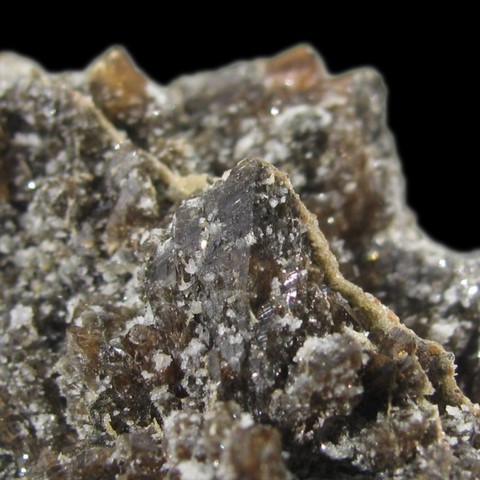CHILDRENITE
Class : Phosphates, arsenates, vanadates
Subclass : Anhydrous phosphates
Crystal system : Orthorhombic
Chemistry : FeAl(PO4)(OH)2 H2O
Rarity : Quite common
Childrenite is a hydrated phosphate typical of pegmatites rich in phosphorus, and of certain hydrothermal veins. It forms an isomorphic series with eosphorite, its manganiferous equivalent. Its name was given to it in honor of the English chemist and mineralogist John George Children. It occurs in finely tabular equant or prismatic pyramidal crystals, striated according to elongation, as well as in crystalline to fibrous encrustations. It is a transparent to translucent mineral with a yellow-brown to dark brown color.
Main photo : Childrenite of George & Charlotte Mine, Devon, England © Gianfranco Ciccolini
Childrenite in the World
Twinning
Twins are common on {100} and {001} but rarely visible.
Fakes and treatments
No fake identified for this mineral species. Very difficult to distinguish from eosphorite without chemical analysis.
Hardness : 5
Density : 3.11 to 3.19
Fracture : Irregular
Streak : White
TP : Translucent to transparent
RI : 1.644 to 1.691
Birefringence : 0.160
Optical character : Biaxial -
Pleochroism : Low
Fluorescence : None
Solubility : -
Magnetism : None
Radioactivity : None





